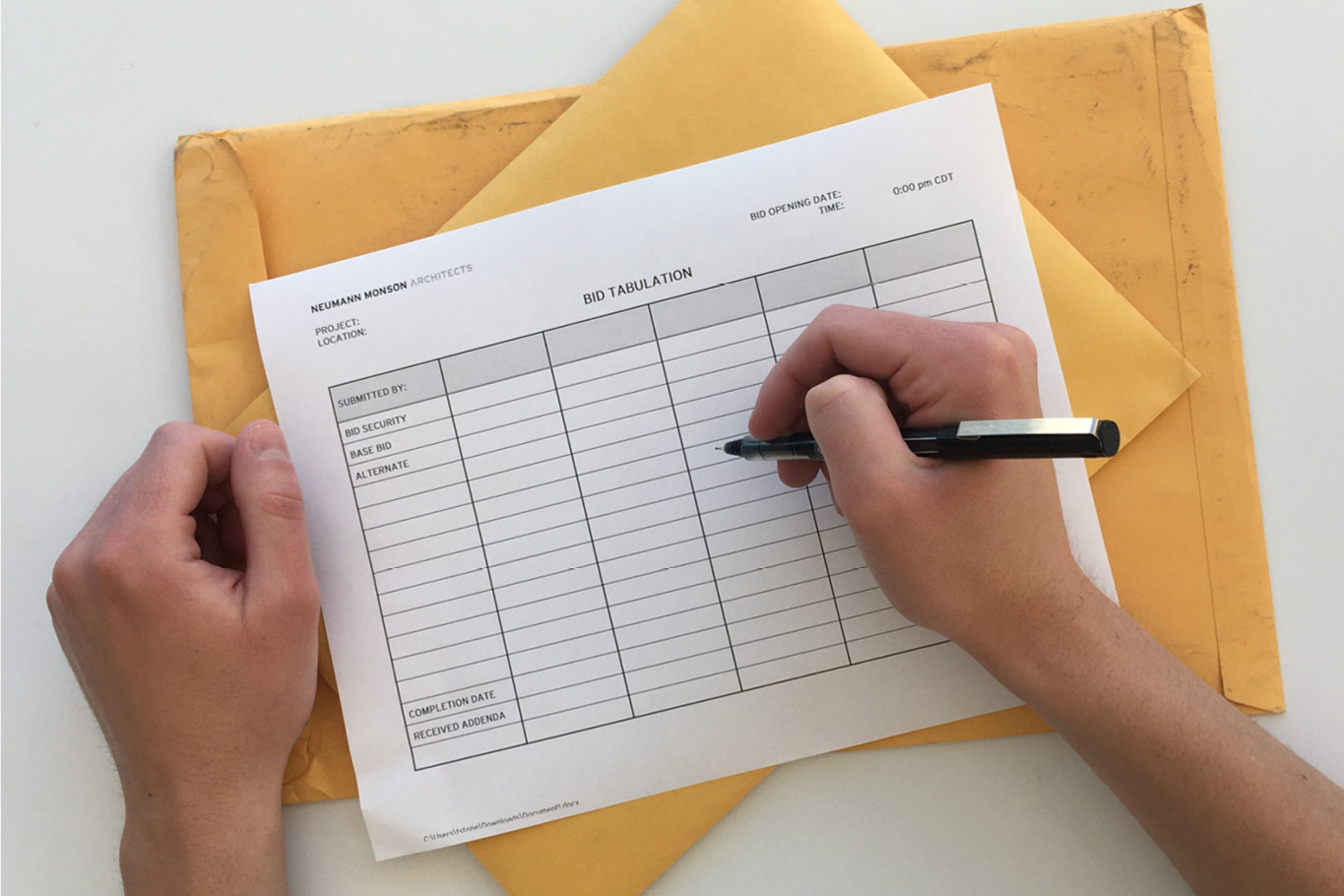What Can You Expect from Bid Day on a Construction Project?

Depending on your project delivery method, you may go through a public bidding process to secure a contractor. Public bidding offers many benefits. It promotes competition and can help you get the best value for your dollar.
At the same time, public bidding can seem like an arduous process with many boxes to check. We believe in setting realistic expectations with anyone starting the bidding process to prevent you from getting lost in red tape.
Bid day is one of the most crucial components of public bidding. On this day, you receive bids from contractors and determine the lowest responsible bidder. It can be broken down into three steps:
- Receive bids
- Tabulate bids
- Validate bids
This article will discuss each step in more detail, helping you prepare for bid day and the process of selecting a contractor.
Pre-Bid Conference
Before discussing bid day, let’s discuss pre-bid conferences. Before bid day, you and your architect should meet with potential bidders.
Your architect should discuss the project’s requirements, outline expectations, and discuss bid day procedures. .
The conference gets everyone on the same page and allows bidders to ask questions ahead of submitting their bids. After, contractors can assess the contract documents and determine their bids.
3 Steps of Bid Day
1. Receive Bids
Depending on the project, the bid day may occur a few weeks to a couple of months after the pre-bid conference. The larger and more complex the project, the more time contractors will need to formulate bids.
Bidders will meet at a specified location and turn in their bids. Typically, they will turn in two envelopes. The first envelope contains the bid form, which specifies:
- Bid amount
- Alternate amounts
- Acknowledgment of addenda
The second envelope contains the bid bond, a document signed by a third-party surety company that ensures compensation if the bidder withdraws the bid.
If the lowest responsible bidder fails to start work, you can accept the bond and choose the second-lowest bidder. Although this situation is rare, bid bonds are a necessary form of security.
2. Tabulate Bids
After you receive bids, it’s time to open the envelopes and read them aloud. Usually, your architect handles this task, but you are free to appoint a representative. The person who reads the bids just needs to be a neutral party who is unaffiliated with the contractors.
As your architect reads the bids, they will tabulate them to determine the lowest responsible bidder. Any bid form that does not comply with the requirements will be thrown out and not read aloud. A mistake like failing to sign the bid form can lead to automatic disqualification.
Generally, bids should be similar. A group of similar bids points to a thorough set of contract documents.
If there are major discrepancies between bids, it could suggest bidders did not fully understand the scope of the work. Your architect may need to return to the contract documents and schedule a new bid day to ensure bids are more accurate.
Supply chain issues and changes in material prices can also impact bids. In unstable economic conditions, you may encounter more discrepancies.
3. Validate Bids
Once you’ve tabulated the bids, you can determine the lowest responsible bidder. Your architect will contact the lowest bidder and verify that they are comfortable and confident with their bid. If the bidder is confident, your architect can prepare a recommendation.
If the bidder is not confident with their bid, you can accept the bid bond and choose the second-lowest bidder. However, this situation rarely occurs.
In some cases, your architect may ask the contractor for additional references. If your architect is unfamiliar with the contractor, they should research the contractor’s experience. This due diligence assures that the bidder is responsible and capable of completing the job.
After your architect writes their recommendation, they will meet with you to discuss your options. If you accept the bid, your architect can assist in writing a contract. We always recommend having your council also review the contract before signing.
After the final contract is ready and signed, you can start construction.
What Are Your Next Steps?
Public bidding can be a tedious process. You must follow many rules and regulations to ensure fairness and competition.
Many rules pertain to bid day. You and your architect will follow a strict step-by-step process to abide by the rules. Contractors will follow specific specifications for submitting bids, and you and your architect will read the amounts aloud—ensuring transparency.
Once this process is complete, your contractor can get to work. Learn about construction by reading about the relationship between you, your architect, and your contractor.